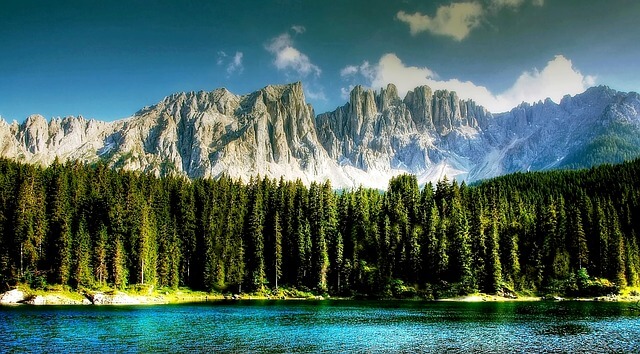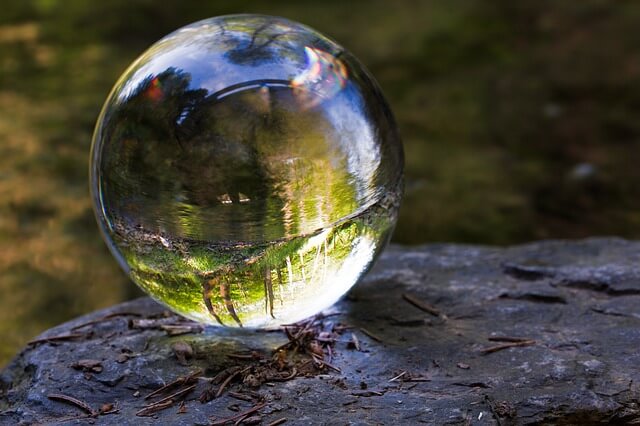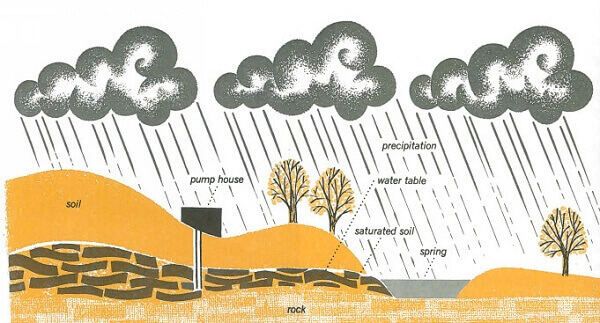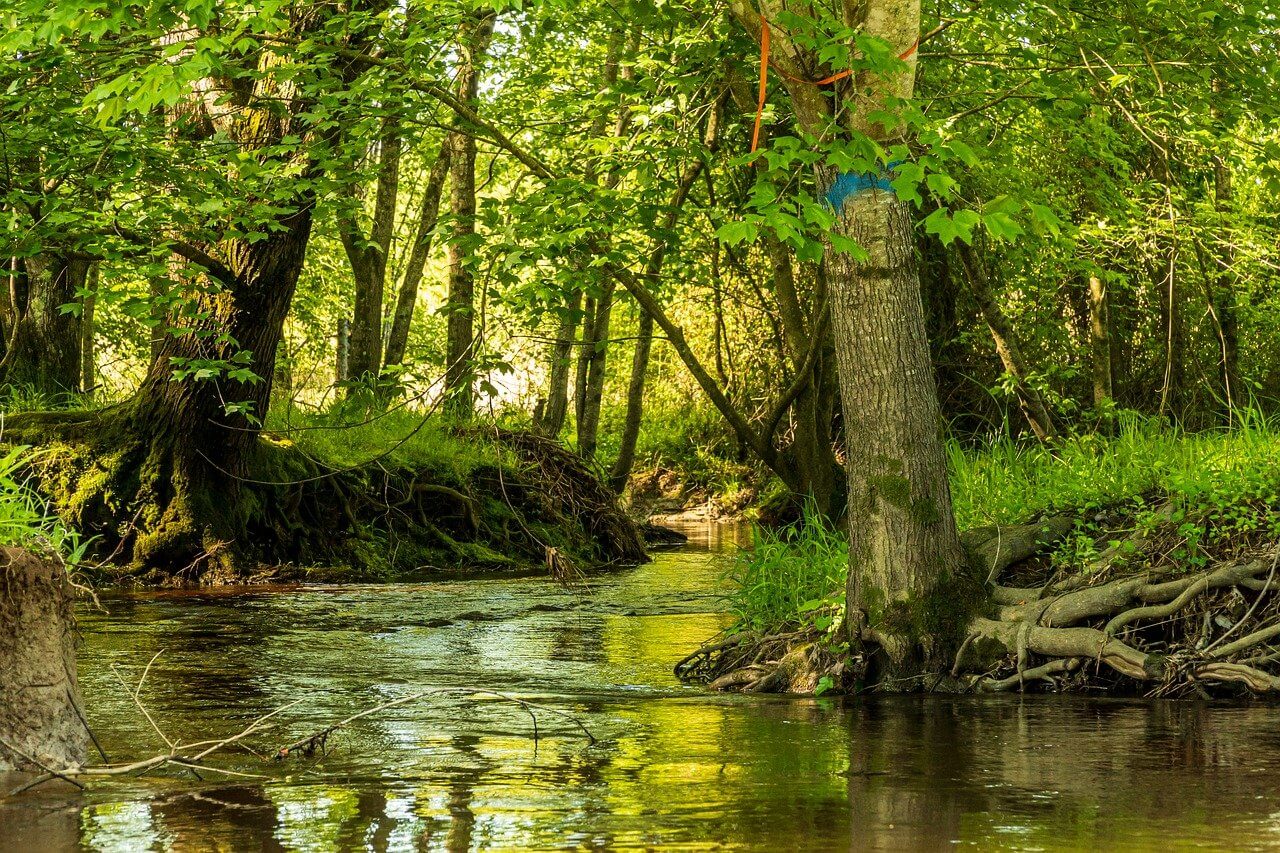What is water erosion? What are the effects of water erosion and what can we do to conserve the water? Importance of water for life.
Like all other living things, we must have water to stay alive. Water makes up about two thirds of the weight of our bodies. Yet each of us loses at least two quarts of water from his body every day. This water must be constantly replaced. Otherwise we would probably die in three or four days. So water is one of the few things that we cannot get along without. The others are food and air.
Nearly all of our food comes directly or indirectly from green plants, which must have water to make it. Without water, plants cannot grow even in the most fertile soil. Each day that an average crop is growing actively, its roots take from the soil 6 or more tons of water per acre. Many industrial processes require huge amounts of water, too. For example, as much as 150 tons of water may be needed to make a ton of steel. A great deal of water is also used for fire fighting and sanitation.

Source : pixabay.com
Our two main sources of supply are surface water and ground water. Both of these sources get water from rain or melted snow. Surface water flows off the land and forms streams and lakes. What sinks into the soil and porous rock becomes ground water. As the water moves downward, some moisture is left around each soil particle. This is the moisture that plants use.
The rest of the water keeps on going down until it comes to tightly packed soil or solid rock through which it cannot pass. Since the water can go no farther down, it gathers in the spaces between the particles of soil or rock above. When these spaces are filled with water, the soil or rock is saturated. The top of the saturated soil or rock is called the water table.
Ground water must first be brought up to the surface before it can be used as a source of supply. Sometimes the water table comes to the surface on a hillside. There ground water flows out, forming a spring. Where the water table is beneath the surface, wells are built. A well is an artificial spring. When the bottom of a well is at or below the water table, ground water runs in from the saturated soil or rock around it. Then the water is brought up to the surface, ordinarily with a pump of some kind. If the water table is fairly near the surface, shallow wells can be dug or driven into the ground. But if the water table is farther down, deep wells must usually be drilled.

Source : pixabay.com
Unlike ground water, surface water is ready for use at once as a source of supply. And it can be used directly without wells or pumps. Streams and lakes provide water directly to cities nearby. As the population increases, more and more water is needed for all purposes. So water is withdrawn faster than it is replaced. Yet there are only two main sources of supply: surface water and ground water. Rain and melted snow provide water for both sources. Wherever water is withdrawn faster than it is replaced, sooner or later a shortage occurs. If the source is surface water, the water level in streams, lakes, and reservoirs goes down. If ground water is the source, the water table falls in springs and wells.
Of course, lack of rain or snow makes the shortage much worse. However, if enough rain or snow comes before too long, the water level in streams, lakes, and reservoirs can usually be restored. This is not always true of the water table. Once it falls, it may never come back up again. The water may have been gathering in the ground for many years—hundreds or thousands of years. In some places, the water table has already fallen more than 500 feet since the first wells were made.
Even where there is still plenty of water, the water may not be fit for use. Surface water runs off the land, carrying particles of soil into streams and lakes. Sand, clay, and humus are suspended in the moving water. The sand settles soon after the water begins to slow down. But the clay and humus do not settle until the water has been quiet for a long time. While they remain suspended, the water is cloudy and muddy.

Source : pixabay.com
In many places, raw sewage and factory wastes are dumped directly into streams and lakes. Or sewage and other wastes are allowed to seep into the ground. Whichever happens, the water becomes foul and polluted. Even if the water looks clear and pure, it may be full of germs or harmful chemicals. It may also have a very bad taste or odor. So wherever the water is muddy, polluted, or otherwise unfit for use, the effect can be about the same as an actual shortage of water.
Quantity is a requirement that every supply of water must meet. But enough of just any kind of water is rarely satisfactory. Quality is nearly always another requirement. Usually, the water has to be not only clear and pure but also tasteless and odorless. To be clear, water must be almost entirely free from suspended particles of soil or other solids. To be pure, it must be free from germs or harmful chemicals. To be tasteless and odorless, it must not contain certain dissolved minerals or gases.
Not many communities have a convenient supply of water that meets the requirements of both quantity and quality. Where there is plenty of water, it is often unfit for use. Or if the quality is good, the quantity may not be great enough. An ample supply of clear, pure water may be too far away or too deep in the ground to be reached without great cost. Our problem is how to make more water available for use where it is needed. To solve the problem, we must learn to conserve water. Only by doing this can the shortage of water be overcome.

One of the main things that we can do to increase the supply of water is to prevent waste or damage. By reducing leakage and careless use, a large city saved 10 million gallons of water a day. This can be accomplished in more than one way. Where water is needed for heating and cooling, it can be used over and over again until it evaporates. By re-using water, less than 10 tons are required to make a ton of steel. Floods bring more water than is wanted at one time. Then a shortage of water often comes later on. Building dams across streams helps control floods and store water for future use.
Plants such as grass and trees also help in flood control and water storage. They hold back water and keep it from running off the land too fast. As a result, more water sinks into the soil. Streams and lakes do not become so muddy, either, since less soil is washed into them. So keeping land in grass and trees reduces both the waste of water and the damage to it. Protecting water from pollution also prevents damage and increases the supply. Some cities and states now have laws that prohibit dumping raw sewage and factory wastes directly into streams and lakes. Sewage and other wastes must first be treated to kill germs and remove harmful chemicals.
The other main thing that we can do to increase the supply of water is to open up unused sources. This is already being done, often at great cost. Where the water level in nearby reservoirs has gone down, surface water is brought from streams and lakes farther away. Where the water table has fallen, deeper wells are drilled. Nearby sources of supply are also treated to make them fit for use. There are various ways of treating water. Which one is used depends on what must be done to make the water satisfactory. In some places, the water has to be treated in more than one way.
Muddy, polluted water can often be made clear and pure by letting it stand for a time in reservoirs or settling basins. To speed up the process and remove more of the suspended particles, a chemical such as alum or iron sulfate can be added to the standing water. The chemical forms many sticky flakes. As they become larger and heavier, they sink to the bottom, carrying suspended particles down with them. The water in reservoirs and settling basins is exposed to air and sunshine. Many of the germs are killed either by oxygen that dissolves in the water or by ultraviolet rays. To purify water more rapidly and completely, it is sometimes sprayed into the air.
Another way to make water clear and pure is by filtering it. In a city filtering plant, there are thick layers of sand and gravel. As water seeps down through them, suspended particles and many of the germs are left behind. After a time, the layers of sand and gravel have to be cleaned. Then they can be used again. Where water has become badly contaminated, it must be treated still further to kill the germs. One way to do this is by putting a small amount of chlorine or some other chemical into the water. The chemical kills the germs. But it may also give the water an unpleasant taste and odor.

Source : pixabay.com
Perfectly clear, pure water is needed for special purposes. At present, the best way to get such water is by distilling it. This process is carried on in a device called a still. Water is first heated to make it evaporate. The impurities are left behind, since they are not changed to gases. The water vapor is then cooled to make it condense. The liquid water that forms is perfectly clear and pure. It does not even contain dissolved minerals. So instead of carrying a supply of fresh water, ships at sea often distill it from salt water.
As yet, the process is too costly for supplying large quantities of fresh water to communities near the oceans. Most of the cost is for fuel, which is burned to heat the water and make it evaporate. Scientists are now developing cheaper ways to distill salt water and change it into fresh water. One way is to use radiant energy from the sun as the source of heat. Scientists are also working on other processes that use chemicals or electric current to remove the dissolved salt. If an economical way can be found, communities near the oceans will have an almost unlimited supply of water.